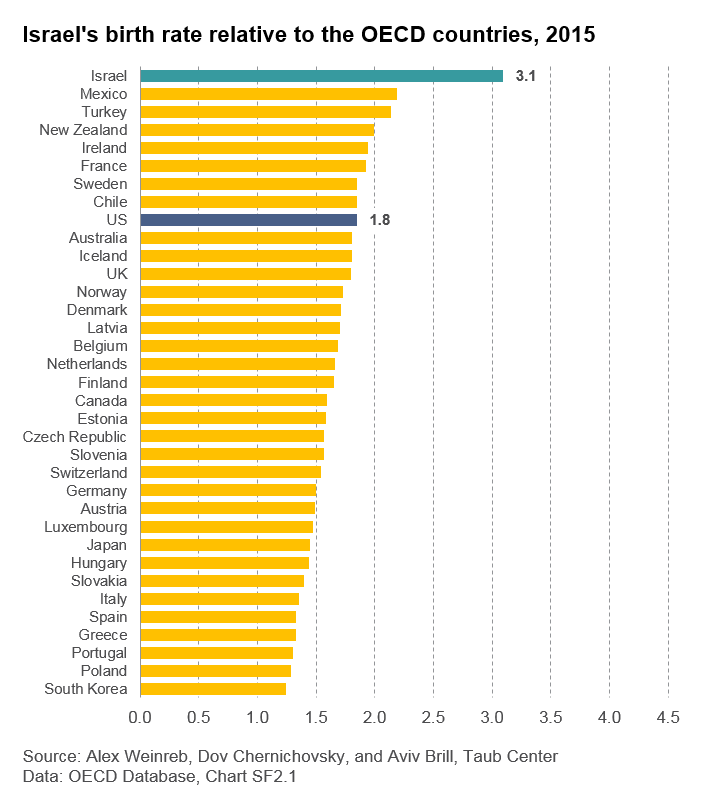Israel is blessed to have ~300 days of sunshine a year. In fact, with so…
#72 Israel loves children

Israelis love children and we see this love reflected in the amount of children born every year. While American and European birth rates are dropping, the fertility rate in Israel is relatively high.
The total fertility rate (TFR) of a population is the average number of children that an average woman would have, in her lifetime.
- 3.01 children born/woman (2019)
Jewish total fertility rate increased by 10.2% during 1998–2009, and was recorded at 2.90 during 2009. During the same time period, Arab TFR decreased by 20.5%. Muslim TFR was measured at 3.73 for 2009. During 2000, the Arab TFR in Jerusalem (4.43) was higher than that of the Jews residing there (3.79). But as of 2009, Jewish TFR in Jerusalem was measured higher than the Arab TFR (2010: 4.26 vs 3.85, 2009: 4.16 vs 3.87). TFR for Arab residents in the West Bank was measured at 2.91 in 2013, while that for the Jewish residents was reported at 5.10 children per woman.
The ethnic group with highest recorded TFR is the Bedouin of Negev. Their TFR was reported at 10.06 in 1998, and 5.73 in 2009. TFR is also very high among Haredi Jews. For Ashkenazi Haredim, the TFR rose from 6.91 in 1980 to 8.51 in 1996. The figure for 2008 is estimated to be even higher. TFR for Sephardi/Mizrahi Haredim rose from 4.57 in 1980 to 6.57 in 1996. In 2020 the overall Jewish TFR in Israel (3.00) was for the first time measured higher than Arab Muslim TFR (2.99).
The Taub Center for Policy Study in Israel reports:
Israel’s Period Total Fertility Rate (TFR) in 2015 was 3.1, which is unusually high, and well above the population “replacement level” of 2.1. While there have been widespread and recognizable reductions in fertility over the last 150 year – the “Fertility Transition” pulling TFR to around 2-3 children per woman, and the “Second Demographic Transition” pulling it below 2 since about the 1970s – Israel is unique among OECD countries in not having followed the second of these international trends.




